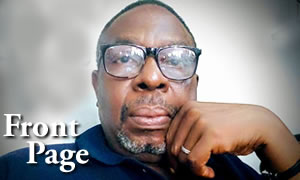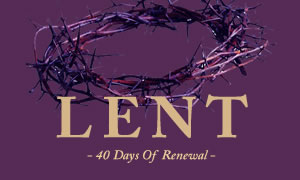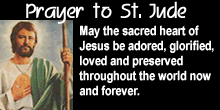


 The Instrument of Our Salvation
The Instrument of Our Salvation
The Feast of the Exaltation of the Holy Cross, celebrated every year on September 14, recalls three historical events: the finding of the True Cross by Saint Helena, the mother of the emperor Constantine; the dedication of churches built by Constantine on the site of the Holy Sepulchre and Mount Calvary; and the restoration of the True Cross to Jerusalem by the emperor Heraclius II. But in a deeper sense, the feast also celebrates the Holy Cross as the instrument of our salvation. This instrument of torture, designed to degrade the worst of criminals, became the life-giving tree that reversed Adam's Original Sin when he ate from the Tree of the Knowledge of Good and Evil in the Garden of Eden.
History of the Feast of the Exaltation of the Holy Cross
After the death and resurrection of Christ, both the Jewish and Roman authorities in Jerusalem made efforts to obscure the Holy Sepulchre, Christ's tomb in the garden near the site of His crucifixion. The earth had been mounded up over the site, and pagan temples had been built on top of it. The Cross on which Christ had died had been hidden (tradition said) by the Jewish authorities somewhere in the vicinity.
Saint Helena and the Finding of the True Cross
According to tradition, first mentioned by Saint Cyril of Jerusalem in 348, Saint Helena, nearing the end of her life, decided under divine inspiration to travel to Jerusalem in 326 to excavate the Holy Sepulchre and attempt to locate the True Cross. A Jew by the name of Judas, aware of the tradition concerning the hiding of the Cross, led those excavating the Holy Sepulchre to the spot in which it was hidden.
Three crosses were found on the spot. According to one tradition, the inscription Iesus Nazarenus Rex Iudaeorum ("Jesus of Nazareth, King of the Jews") remained attached to the True Cross. According to a more common tradition, however, the inscription was missing, and Saint Helena and Saint Macarius, the bishop of Jerusalem, assuming that one was the True Cross and the other two belonged to the thieves crucified alongside Christ, devised an experiment to determine which was the True Cross.
In one version of the latter tradition, the three crosses were taken to a woman who was near death; when she touched the True Cross, she was healed. In another, the body of a dead man was brought to the place where the three crosses were found, and laid upon each cross. The True Cross restored the dead man to life.
The Dedication of the Churches on Mount Calvary and the Holy Sepulchre
In celebration of the discovery of the Holy Cross, Constantine ordered the construction of churches at the site of the Holy Sepulchre and on Mount Calvary. Those churches were dedicated on September 13 and 14, 335, and shortly thereafter the Feast of the Exaltation of the Holy Cross began to be celebrated on the latter date. The feast slowly spread from Jerusalem to other churches, until, by the year 720, the celebration was universal.
The Restoration of the True Cross to Jerusalem
In the early seventh century, the Persians conquered Jerusalem, and the Persian king Khosrau II captured the True Cross and took it back to Persia. After Khosrau's defeat by Emperor Heraclius II, Khosrau's own son had him assassinated in 628 and returned the True Cross to Heraclius. In 629, Heraclius, having initially taken the True Cross to Constantinople, decided to restore it to Jerusalem.
Tradition says that he carried the Cross on his own back, but when he attempted to enter the church on Mount Calvary, a strange force stopped him. Patriarch Zacharias of Jerusalem, seeing the emperor struggling, advised him to take off his royal robes and crown and to dress in a penitential robe instead. As soon as Heraclius took Zacharias' advice, he was able to carry the True Cross into the church.
For some centuries, a second feast, the Invention of the Cross, was celebrated on May 3 in the Roman and Gallican churches, following a tradition that marked that date as the day on which Saint Helena discovered the True Cross. In Jerusalem, however, the finding of the Cross was celebrated from the beginning on September 14.
Why Do We Celebrate the Feast of the Holy Cross?
It's easy to understand that the Cross is special because Christ used it as the instrument of our salvation. But after His Resurrection, why would Christians continue to look to the Cross?
Christ Himself offered us the answer: "If any man will come after me, let him deny himself, and take up his cross daily, and follow me" (Luke 9:23). The point of taking up our own cross is not simply self-sacrifice; in doing so, we unite ourselves to the sacrifice of Christ on His Cross.
When we participate in the Mass, the Cross is there, too. The "unbloody sacrifice" offered on the altar is the re-presentation of Christ's Sacrifice on the Cross. When we receive the Sacrament of Holy Communion, we do not simply unite ourselves to Christ; we nail ourselves to the Cross, dying with Christ so that we might rise with Him.
"For the Jews require signs, and the Greeks seek after wisdom: But we preach Christ crucified, unto the Jews indeed a stumbling block, and unto the Gentiles foolishness... " (1 Corinthians 1:22-23). Today, more than ever, non-Christians see the Cross as foolishness. What kind of Savior triumphs through death?
For Christians, however, the Cross is the crossroads of history and the Tree of Life. Christianity without the Cross is meaningless: Only by uniting ourselves to Christ's Sacrifice on the Cross can we enter into eternal life.


I have been thinking a great deal about my experience at Reconciliation this past Saturday. I felt an intense and unexplainable urge to go and confess my sins when I woke up that morning. I try to go every six weeks or so, but this was no routine visit to the priest for me. I needed to unburden myself of the numerous venial sins I had committed since I last participated in this Sacrament.
Purest Gold: God's Refining Fire in our Lives »
After salvation, many young Christians wonder if there's anything more to their newfound faith than just the security blanket of "being a Christian." Time and time again, God shows himself as a "refiner," and our lives are as gold. God started leading me in this study to understand what He was doing in my life, as well as in the lives of others.
Picking up my pen to write this column, I couldn’t imagine how time flies. Since the last publication of this column I have gone through a lot, especially the loss of my dear mother to whom I dedicate this article. Not only her, but seems I lost a whole generation of my close family.
How to Achieve Business Excellence »
“Do you see a man who excels in his work? He will stand before Kings; He will not stand before unknown men.” Proverbs 22:29
Spiritual Development for our Youth »
Most of us youth in today's fast moving world are easily thrown off by difficulties and worries.
The theme of conversion is a thread that runs all through Lent, but conversion takes on different aspects throughout the phases of Lent. The first two and a half weeks focused on the interior turning of hearts; the liturgy urges the faithful to reflect and examine consciences thoroughly.
Saint Josephine Bakhita »
Feast Day: February 8
Patron Saint Of: Sudan
Saint Josephine Margaret Bakhita was born around 1869 in the village of Olgossa in the Darfur region of Sudan. She was a member of the Daju people and her uncle was a tribal chief. Due to her family lineage, she grew up happy and relatively prosperous, saying that as a child, she did not know suffering.
Catholics Must Fast More Intensely This Lent»
The Norbertine Canons of St. Michael's Abbey have created this digital Lenten retreat so that you can journey through this holy season alongside them. If you want to have one of your best Lenten seasons yet, join us in our Lenten Program "The Great Fast" - https://theabbotscircle.com/the-great-fast-join
When Your Faith Is Put to the Test - Bishop Barron's Sunday Sermon»
Friends, we come now to the Second Sunday of Lent, and we’re on both dangerous and very holy ground with the first reading from the twenty-second chapter of Genesis. The ancient Israelites referred to it as the “Akedah,” which means the “binding”: Abraham binds and is ready to sacrifice Isaac at God’s command.

Copyright © 2002-2024 THE BEACON INTERNATIONAL CATHOLIC MAGAZINE. All rights reserved.
another mc.rufus interactive web design